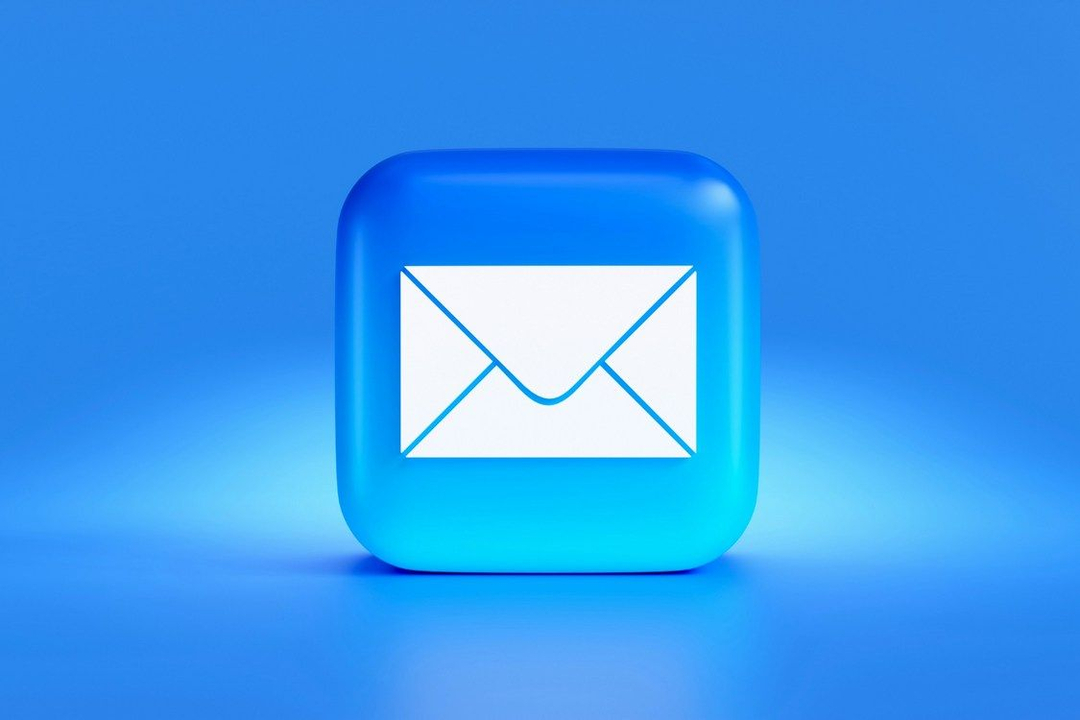Best B2B Cold Email Templates That Actually Work
by Maildoso's team
05/28/2025
difficulty level ⭐⭐
Cold emailing remains one of the most efficient ways to start business conversations. It’s not about sending thousands of generic messages, it’s about reaching the right people with the right message at the right time.
This article dives into effective B2B cold email templates, explains how to use them correctly, and breaks down what actually works in real outreach scenarios. Whether you're reaching out for sales, partnerships, recruiting, or guest posts, these templates offer practical formats you can personalize and adapt to your context.
Contents
- What Makes a Good B2B Cold Email?
- How to Personalize Cold Emails Effectively
- Maildoso - And How It Fits Into Your Cold Email Strategy
- 10 Reliable Cold Email Templates for B2B
- Cold Emailing Best Practices for B2B
- Industry-Specific Cold Email Approaches
What Makes a Good B2B Cold Email?
Key Elements to Include
Before jumping into templates, it’s important to understand what makes a cold email effective in the B2B space. Here’s what to focus on:
- Clear subject line: Short, relevant, and curiosity-driven
- Personalization: Mention specifics about the person or company
- Brief message: Ideally under 125 words
- Pain point awareness: Show you understand the recipient’s challenges
- One CTA: Make it clear what you want them to do next
- No fluff: Remove any unnecessary self-promotion or vague statements
Things to Avoid
- Writing long emails with multiple goals
- Using jargon or buzzwords
- Sounding robotic or overly formal
- Including several CTAs that confuse the reader
- Adding too many formatting elements or visual components
How to Personalize Cold Emails Effectively
Even the most well-written cold email template can fall flat if it sounds like it was sent to a hundred other people. To make your message resonate, personalization is essential. One of the simplest ways to start is by using the recipient’s name and mentioning their role or title. Going a step further, referencing the company’s recent news, such as a press release or LinkedIn activity, shows that you’ve done your homework.
You can also include a nod to shared contacts or common interests, which helps establish trust and familiarity. Highlighting a specific challenge the company is dealing with makes your outreach more relevant, especially when you connect it to a real solution. If available, mention industry-specific data or a short case study to reinforce your point and add credibility.
Personalization becomes especially important in certain situations. If you’re targeting high-value B2B deals, for instance, it’s worth the extra time to tailor your message. The same applies when reaching out to C-level executives or when your target list is very focused and selective. In these cases, a generic message won’t cut it, relevance and clarity matter most.
Maildoso - And How It Fits Into Your Cold Email Strategy
We’re Maildoso, and we build infrastructure for cold outreach. Our platform isn’t a strategy service - it’s a technical solution that helps B2B teams set up and run large-scale cold email campaigns without manual setup work. Instead of registering domains, configuring DNS records, and creating Google Workspace accounts one by one, users can launch up to 1,000 fully configured mailboxes in under 10 minutes.
Each mailbox comes ready for cold outreach - SPF, DKIM, and MX records are already in place. You also get domains included, and if you leave, the domains are yours to keep. For warming up inboxes, we use browser-based AI agents (not traditional IMAP connections), which mimic real inbox activity to help messages land in the inbox instead of spam. Our infrastructure is used to send 20,000+ cold emails per day across many campaigns, with built-in IP rotation to maintain high deliverability over time.
Whether you’re running outbound email for sales, hiring, or partnerships, Maildoso handles the backend infrastructure so you can focus on writing better emails, not configuring settings.
10 Reliable Cold Email Templates for B2B
Below are practical templates you can use across different scenarios. Adjust names, companies, and details accordingly.
1. The Classic Value Pitch Email
Subject: A quick idea to improve [Process] at [Company]
Hi [First Name],
I work with companies like [Competitor/Similar Company] to improve [specific result]. One idea we implemented helped them [specific outcome].
I’d love to share what we learned, it might be useful to your team too. Do you have 15 minutes this week to talk?
Thanks, [Your Name]
2. The Decision-Maker Finder
Subject: Who’s best to speak with about [Topic]?
Hi [First Name],
Quick question, would you be the right person to speak with about [Topic/Service]?
If not, could you kindly point me in the direction of the right contact on your team?
Thank you, [Your Name]
3. The Quick Question Approach
Subject: Quick question about [Specific Need]
Hi [First Name],
I noticed [Company Name] is working on [project/topic]. We’ve helped other teams tackle similar challenges, especially around [pain point].
Could we hop on a 10-minute call to see if this is something that might work for you?
Best, [Your Name]
4. The Free Resource Email
Subject: Thought this might help with [Their Focus Area]
Hi [First Name],
We put together a resource on [Topic] that I thought might be relevant to [Company Name].
Here’s the link: [Resource Link]
If you find it useful, I’d be happy to chat briefly to see if there’s any way we can support you further.
Cheers, [Your Name]
5. The Event or Webinar Invite
Subject: Join us for [Event Name] on [Date]
Hi [First Name],
We’re hosting a session on [Event Topic] on [Date], covering:
- [Key Point 1]
- [Key Point 2]
- [Key Point 3]
Would love for you to attend if you're available. Registration link: [Link]
Best regards, [Your Name]
6. The Reconnection Email
Subject: Still open to exploring [Topic]?
Hi [First Name],
I wanted to check in on our earlier conversation about [Service/Topic]. Things may have shifted on your end, and I’d be glad to reintroduce what we offer with your current priorities in mind.
Would you be open to a quick catch-up call this week?
Thanks, [Your Name]
7. The “You Visited Our Site” Follow-Up
Subject: Noticed your interest in [Tool/Product]
Hi [First Name],
Saw you recently visited our site, thanks for checking us out. If you’re evaluating options in this space, I’d be happy to walk you through how others in [Industry] are using our platform.
Feel free to book a quick chat here: [Calendar Link]
Regards, [Your Name]
8. The Competitor Comparison Email
Subject: Outperforming [Competitor Name]
Hi [First Name],
I noticed your team uses [Competitor]. Some of our clients made the switch and saw improvements in [Result Area].
We’ve documented some of those outcomes here: [Link]
Let me know if you’d be interested in a short comparison walkthrough.
Best, [Your Name]
9. The Cold Outreach to Influencers
Subject: [Their Name], impressive work/your recent post on [Platform]
Hi [First Name],
I’ve been following your posts on [LinkedIn/Twitter/etc.], especially your piece on [Topic]. I think your perspective aligns well with what we’re building at [Your Company].
Would you be open to a quick conversation about a possible collaboration?
Thanks, [Your Name]
10. The Follow-Up Email
Subject: Just checking in
Hi [First Name],
Wanted to follow up on my last message in case it slipped through. I’d still be happy to share a few ideas for [specific problem or topic].
Is this still relevant on your end?
Best, [Your Name]
Cold Emailing Best Practices for B2B
Writing Better Subject Lines
Your subject line is often the first and only chance to catch someone’s attention. If it doesn’t connect, your email likely won’t get opened. To improve your chances, keep subject lines concise, ideally under 50 characters, and make sure they’re tied directly to the recipient’s work or challenges. Avoid all caps or punctuation overload, which can come off as spammy. It also helps to test different versions for different segments to see which ones perform best. For instance, something like “Fixing [pain point] at [Company Name]” or “A quick idea for [specific process]” feels specific and relevant. Even subtle references to competitors, such as “[Competitor Name] tried this and it worked,” can make someone curious enough to click.
Keeping the Message Brief
Once your email is opened, the clock is ticking. People skim quickly, especially when they don’t recognize the sender. That’s why cold emails should be short, somewhere between 50 to 125 words, and get to the point fast. Stick to no more than three short paragraphs and focus on one purpose only. If the reader can’t figure out what your email is about in a few seconds, they’ll likely move on. Simplicity and clarity matter more than cleverness here.
Using One CTA
Every cold email should have one clear next step. Including more than one call to action often causes confusion or indecision. Decide what you want, whether it’s scheduling a meeting, offering a free trial, requesting a reply, or sharing a resource, and make that request as clear as possible. If the recipient is interested, they shouldn’t have to guess what to do next.
Following Up Without Being Annoying
Most responses don’t come from the first message, which is why follow-ups are essential. A thoughtful follow-up strategy often includes multiple messages spaced out over a couple of weeks. For example, you might send your first follow-up after three days, another one about a week later, and a final check-in after 10 to 14 days. What matters is that each message adds something new, perhaps a fresh angle, a quick case study, or a gentle nudge. The goal isn’t to pester, but to stay on the radar in a respectful way.
Industry-Specific Cold Email Approaches
Not all cold emails are created equal. Adjust tone and content depending on your audience:
- For SaaS Companies: Focus on ROI, speed to value, and product usability. Include customer stories.
- For Agencies: Showcase recent campaigns and outcomes. Emphasize flexibility and understanding of their niche.
- For Recruiters: Be specific about the role, benefits, and next steps. Avoid buzzwords.
- For Consultants: Lead with a problem you've solved before. Keep it grounded and practical.
Conclusion
Cold emailing doesn’t always lead to results, but with the right strategy, it can still be one of the most effective ways to start real business conversations. The templates we’ve covered aren’t magic, they’re just well-structured, purposeful messages that respect the reader’s time and get to the point. The key is knowing your audience, keeping it personal, and making it easy for them to take the next step.
Whether you’re reaching out to potential clients, partners, or candidates, always aim for clarity over cleverness. Don’t just send emails, start conversations that actually lead somewhere.
FAQ
Double your outbound sales with Maildoso!
We provide the infrastructure for cold outreach with the highest possible deliverability. Forget about the spam folder—set up hundreds of mailboxes in just 10 minutes, starting at only $1.80/month!
You might also be interested
Best Cold Email Software for Smarter Outreach
Explore the best cold email software to send smarter campaigns, reach more prospects, and improve your outbound results without hitting spam.
difficulty level: ⭐⭐
How to Choose the Best Cold Email Platform for B2B Outreach
Explore the best cold email platform options for managing domains, mailboxes, and deliverability in B2B outreach.
difficulty level: ⭐⭐
Best Cold Email Outreach Software for B2B Campaigns
A practical guide to the best cold email outreach software for managing campaigns, improving deliverability, and scaling B2B outreach.
difficulty level: ⭐⭐
BacklinkSwappers, inc.
1390 Market Street Suite 200 San Francisco, CA 94102



